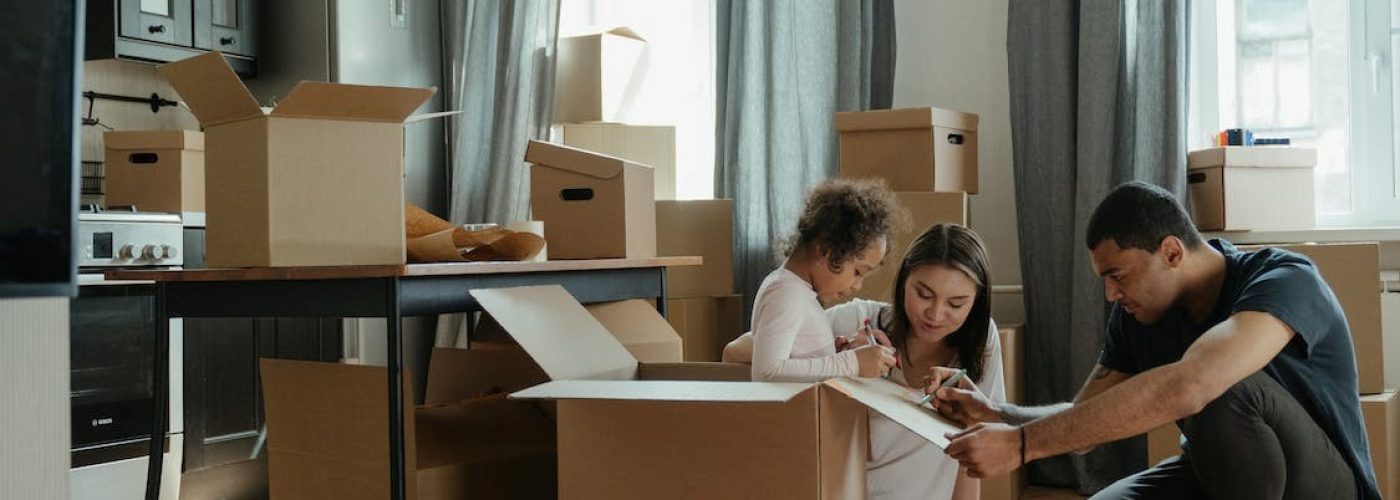Everyone knows how tough moving can be. It is probably the most complicated logistical activity that the average person performs in her or her life outside of work. From ensuring proper packing to changing addresses and arranging for new utility services, the effort needed can be substantial.
Bring kids and pets into the picture, and the situation becomes even messier. Thankfully, knowing how to move in the right way can reduce a good bit of the stress and, surprisingly enough, turn the experience into a fun and exciting activity. Let’s find out how.
#1. Clutter is Your Worst Enemy
Recently, the New York Times interviewed Laura McHolm, founder of NorthStar Moving Company, and explored the process of effectively moving homes. The act of culling items that you no longer need was one of the first recommendations that McHolm made.
It makes sense.
Every piece of item that you decide to take is an extra piece of logistics that you and your moving company (if you are hiring one) have to manage.
It is wiser to simply spend some time doing a thorough deep cleaning of your home. Through this process, you would find, donate, or get rid of any items that you no longer need. This can include things like old clothes, outdated furniture, broken items that “can be fixed” (but never will), as well as paperwork and documents that you should have digitized years ago.
Removing all the junk from your home before you even begin the process of packing can make things go much more smoothly for you.
#2. Pack With Frequency of Use in Mind
A common mistake that a lot of inexperienced movers make is sorting and packing by room. For instance, they may decide to pack bedroom-related items first, then living-room items next, etc. This does seem organized at first glance, but it makes accessing important items before and after you move homes a more clunky affair.
Instead, a better way to pack is by making an inventory of the items that you use frequently and packing those last.
This category would include items like toiletries, coffee makers, kitchen utensils, and electronics like your computer (if you use it a lot). Making a list of frequently used items should come soon after you make a checklist of things to do when moving.
Christmas decorations, paintings, and old photos are all examples of items that you don’t have an urgent need for and which can be safely packed away early.
#3. Be Smart About the Way You Pack
Once people identify the category of items they need to pack, they sort of just go at it and fill up a box before taping it up. To be honest, this is fine, as it works most of the time. However, it can be helpful to be aware of certain unwritten rules that make moving and unpacking boxes simpler.
The first aspect involves thinking about weight management across your boxes. If you have a large box, don’t be tempted to fill it up with books. You end up having something that can weigh upwards of 20-30 kg. This makes it a pain to move by yourself and also makes it difficult for any movers you hire.
Similarly, ensure that none of your boxes exceed a weight that makes them heavy to the point that you can’t lift them with moderate ease. If you are going to be using big boxes, only fill them with items that are big but light. If you do need to move a lot of books, place them in multiple smaller boxes.
#4. Cancel and/or Transfer Utility Services
For most people in 2023, a stable internet connection is important, and you would have probably researched providers that can give you a connection quickly in your new home. That’s great, but you should also remember to cancel your other subscriptions and utility services.
This refers to more than just your internet. You want to ensure that you shut off the water and gas soon after you no longer require them. This is one area that people might overlook due to the stress of moving.
At the end of it all, you want to make sure that you don’t have to go around dealing with more logistical work than you need to.
Conclusion
Moving homes doesn’t have to be an exhausting experience. Most of the stress occurs due to poor planning and less-than-ideal packing methods. It is natural for anything to feel complicated when you push everything to the last minute.
This is why effective moving involves preparing at times, even a month in advance. Remember, if you have kids, you can get them to help out with simple tasks such as making an inventory and creating labels so that you don’t waste time on the little tasks that can take up time later on.





